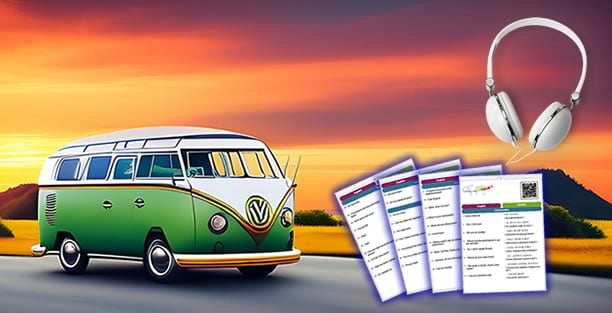Learn Estonian
| English | Estonian | |||
|---|---|---|---|---|
| Hello | Tere! | |||
| Hello | Tere päevast! | |||
| Good evening | Tere õhtust! | |||
| Goodbye | Head aega! | |||
| See you later | Kohtumiseni! | |||
| Yes | Jah | |||
| No | Ei | |||
| Excuse me! | Vabandage! | |||
| Thanks | Tänan | |||
| Thanks a lot | Tänan väga | |||
| Thank you for your help | Tänan teid abi eest! | |||
| You’re welcome | Pole tänu väärt! | |||
| Okay | Nõus | |||
| How much is it? | Palju see maksab? | |||
| Sorry! | Vabandust! | |||
| I don't understand | Ma ei saa aru | |||
| I get it | Ma sain aru | |||
| I don't know | Ma ei tea | |||
| Forbidden | Keelatud! | |||
| Excuse me, where are the toilets? | Kus on tualett, palun? | |||
| Happy New Year! | Head uut aastat! | |||
| Happy Birthday! | Palju õnne sünnipäevaks! | |||
| Happy Holidays! | Häid pühi! | |||
| Congratulations! | Palju õnne! | |||
| Congratulations! | Õnnitlused! |
Objectives This course aims to give travelers the tools they need to quickly master essential expressions in Estonian for everyday situations, such as greeting someone, asking for directions, or ordering a dish in a restaurant. By the end of the course, learners will be able to communicate with simple words on their next trip to Estonia.
How to Learn Estonian by Yourself? Start with an Easy and Free Online Course!
We have adopted an objective and efficient approach to learn how to speak a language easily and quickly. We suggest you start by memorizing words, phrases, and practical expressions that you can use in everyday life and that will be useful when traveling.
Getting used to pronouncing words out loud, such as numbers, is an easy exercise you can often practice and at any time throughout the day.
This practice will help you get accustomed to the sounds of your chosen language, making it more familiar.
Once your holidays have begun, whether in Tallinn, Pärnu, or elsewhere in Estonia, you will be surprised at how familiar and easy to understand it will seem. Furthermore, using a pocket dictionary is always useful, particularly during a trip. It allows you to find the translation of new words and enrich your vocabulary.
Why Speak Estonian While Traveling?
At the Heart of Innovation
Estonia, a Baltic state in Northern Europe, experienced a period of strong economic growth after gaining independence from the Soviet Union in 1991. Today, it is a member of important organizations such as the UN, NATO, and the European Union.
Estonia's economy is based on the export of wood and textile products, as well as electrical and electronic equipment and software. The country is the birthplace of significant software such as Skype, Kazaa, and VoIP. Estonia is also recognized as the first state to grant e-Residency.
Multi-Cultural Heritage
Throughout history, Estonian culture has been enriched by its neighboring countries while maintaining its own identity. Beyond a vast literature, primarily based on poetry, featuring figures like Lydia Koidula, Eduard Vilde, and Marie Under, music plays an important role in the country's education and cultural life.
Make a Success of Your Stay in Estonia
Whether you are going to spend a few days with friends for a leisure trip or if you are on a business trip, nothing will be more useful than being able to slip in a few words in the language of your interlocutors. They will appreciate your effort and be more willing to help.
How to Succeed in Having Good Pronunciation Within a Week to a Month?
Estonian, a language of the Finno-Ugric branch, uses a Latin alphabet with 27 letters, some of which have diacritics. Its phonemes typically have three durations: short, long, or extra-long; the last two are marked by a double letter. Here are some pronunciation tips compared to other languages:
- Ä: Pronounced as a very open A, similar to "cat" in English.
- Ö and Ü: Pronounced /ø/ and /y/, as in German.
- Š and Ž: Pronounced /ʃ/ and /ʒ/, like the CH and J in French.
Practical Tips for Learning Estonian
1. Start with the Basics
Begin by learning the Estonian alphabet and basic pronunciation rules. This foundation will help you read and speak Estonian more accurately.
2. Build Your Vocabulary
Focus on everyday words and phrases that you are likely to use. Flashcards and language apps can be very helpful in expanding your vocabulary.
3. Practice Speaking
Speak Estonian as much as possible. Practice with native speakers or fellow learners. Use language exchange platforms to find conversation partners.
4. Immerse Yourself
Immerse yourself in the language through Estonian media. Watch Estonian movies, listen to Estonian music, and follow Estonian news. This will help improve your listening skills and familiarize you with the cultural context.
5. Take a Language Course
Consider enrolling in a language course with a qualified teacher. Personalized instruction can accelerate your learning and help you master difficult concepts.
6. Stay Consistent
Consistency is key. Practice Estonian daily, even if only for a few minutes. Regular exposure and practice will lead to steady progress.
By following these steps and utilizing the available resources, you can start speaking and understanding Estonian in no time. Happy learning!






